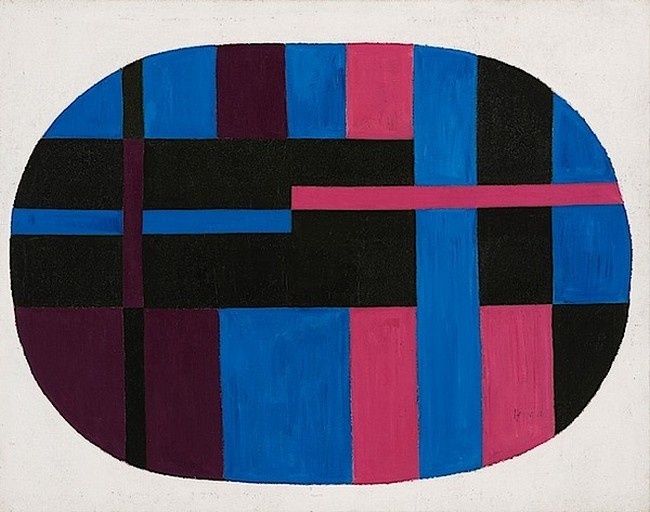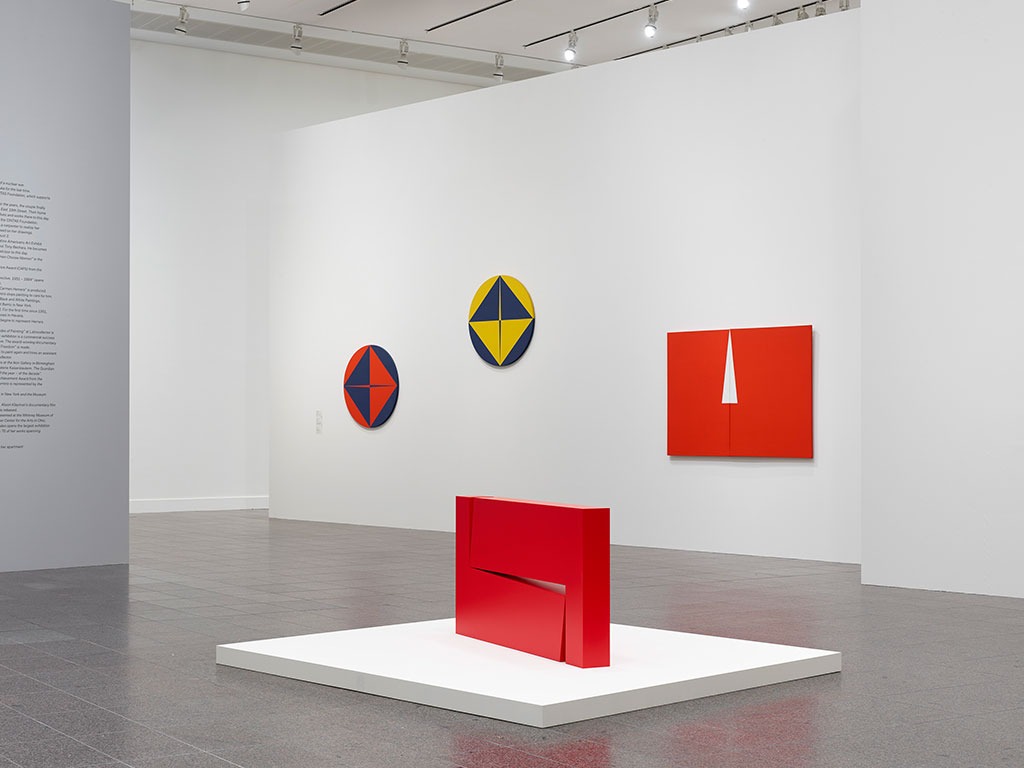Carmen Herrera
Lines of Sight
02 Dec 2017 - 08 Apr 2018

Carmen Herrera, Red with White Triangle, 1961
121,9 x 167,6 cm
Private Collection, New York
© Carmen Herrera
121,9 x 167,6 cm
Private Collection, New York
© Carmen Herrera

Carmen Herrera, Untitled, 1948,
acrylic on canvas, 96,5 cm x 121,9,
Collection Yolanda Santos Art
© Carmen Herrera
acrylic on canvas, 96,5 cm x 121,9,
Collection Yolanda Santos Art
© Carmen Herrera
The Kunstsammlung Nordrhein-Westfalen presents the largest exhibition to date devoted to the Cuban-American artist Carmen Herrera, featuring works drawn from a span of 70 years. Herrera is among the pioneers of geometric abstraction in the United States. This wide-ranging presentation includes circa 70 works and involves paintings, works on paper, and sculptures produced between 1947 and 2017. Herrera – who is now 102 years old – was long ignored by the art world: she sold her first picture at the age of 89. Up to the present, this New York-based artist continues to create powerful, eye-catching works.
Carmen Herrera was born in Havana in 1915. Her father was the editor of the newspaper El Mundo, her mother was a journalist and author. Herrera studied architecture in Havana, where she met the American Jesse Loewenthal. After marrying, the couple moved to New York in 1939, where she studied painting at the Art Students League in 1942/43. Herrera became friends with Barnett Newman, and moved in the circles of a newly emergent Abstract Expressionism. From 1948 until 1954, Herrera lived with her husband in Paris. In 1949, she became a member of the group Salon des Réalités Nouvelles, where she became acquainted with Sonia Delaunay, among others, and had numerous encounters within the most fashionable artistic and literary circles of postwar era. During this phase, Herrera’s work alternated between Abstract and Lyrical Expressionism. In 1952, she produced her first radically geometric abstractions, including a series of black-and-white stripe paintings.
In 1954, the pair returned to New York, where Herrera soon produced the major series "Blanco y Verde" (1959-1971). In these paintings, based exclusively on green and white surfaces, she explored the limits of painting experimentally. Produced as well during the 1960s were the so-called "estructuras." These sculptures, based on preliminary drawings, represent a confrontation with architectonically oriented abstraction. Her works from the last decades reveal that her color field paintings, with their genuinely radical compositional structures, have lost none of their potent impact. Whether round, angular, or rhombic, their compositional precision, clear-cut lines, and bewitching colors continue to cast a suggestive spell on viewers.
Carmen Herrera was born in Havana in 1915. Her father was the editor of the newspaper El Mundo, her mother was a journalist and author. Herrera studied architecture in Havana, where she met the American Jesse Loewenthal. After marrying, the couple moved to New York in 1939, where she studied painting at the Art Students League in 1942/43. Herrera became friends with Barnett Newman, and moved in the circles of a newly emergent Abstract Expressionism. From 1948 until 1954, Herrera lived with her husband in Paris. In 1949, she became a member of the group Salon des Réalités Nouvelles, where she became acquainted with Sonia Delaunay, among others, and had numerous encounters within the most fashionable artistic and literary circles of postwar era. During this phase, Herrera’s work alternated between Abstract and Lyrical Expressionism. In 1952, she produced her first radically geometric abstractions, including a series of black-and-white stripe paintings.
In 1954, the pair returned to New York, where Herrera soon produced the major series "Blanco y Verde" (1959-1971). In these paintings, based exclusively on green and white surfaces, she explored the limits of painting experimentally. Produced as well during the 1960s were the so-called "estructuras." These sculptures, based on preliminary drawings, represent a confrontation with architectonically oriented abstraction. Her works from the last decades reveal that her color field paintings, with their genuinely radical compositional structures, have lost none of their potent impact. Whether round, angular, or rhombic, their compositional precision, clear-cut lines, and bewitching colors continue to cast a suggestive spell on viewers.

